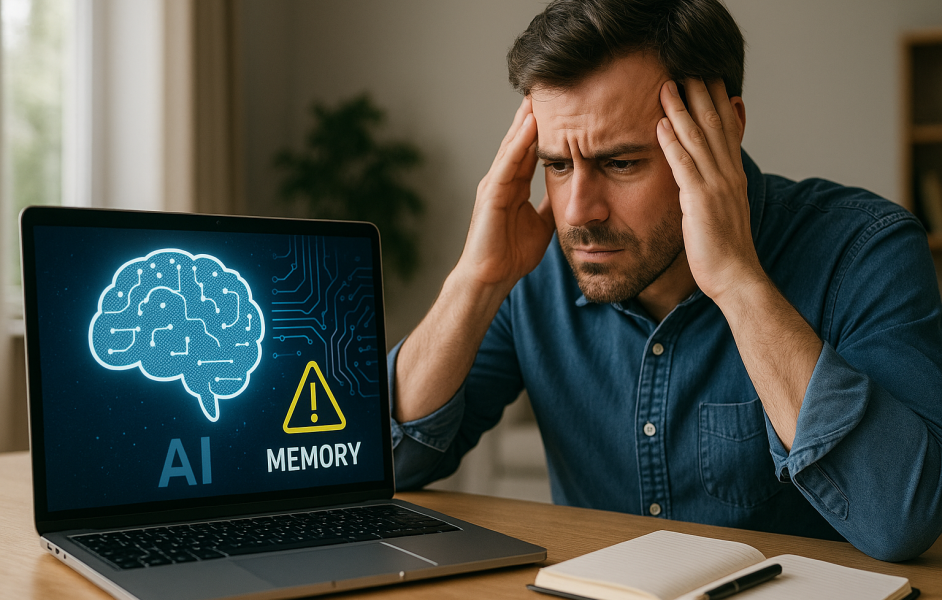Artificial Intelligence (AI) has grown remarkably, moving beyond basic tasks like generating text and images to systems that can reason, plan, and make decisions. As AI continues to evolve, the demand for models that can handle more complex, nuanced tasks has grown. Traditional models, such as GPT-4 and LLaMA, have served as major milestones, but they often face challenges regarding reasoning and long-term planning.
Dream 7B introduces a diffusion-based reasoning model to address these challenges, enhancing quality, speed, and flexibility in AI-generated content. Dream 7B enables more efficient and adaptable AI systems across various fields by moving away from traditional autoregressive methods.
Exploring Diffusion-Based Reasoning Models
Diffusion-based reasoning models, such as Dream 7B, represent a significant shift from traditional AI language generation methods. Autoregressive models have dominated the field for years, generating text one token at a time by predicting the next word based on previous ones. While this approach has been effective, it has its limitations, especially when it comes to tasks that require long-term reasoning, complex planning, and maintaining coherence over extended sequences of text.
In contrast, diffusion models approach language generation differently. Instead of building a sequence word by word, they start with a noisy sequence and gradually refine it over multiple steps. Initially, the sequence is nearly random, but the model iteratively denoises it, adjusting values until the output becomes meaningful and coherent. This process enables the model to refine the entire sequence simultaneously rather than working sequentially.
By processing the entire sequence in parallel, Dream 7B can simultaneously consider the context from both the beginning and end of the sequence, leading to more accurate and contextually aware outputs. This parallel refinement distinguishes diffusion models from autoregressive models, which are limited to a left-to-right generation approach.
One of the main advantages of this method is the improved coherence over long sequences. Autoregressive models often lose track of earlier context as they generate text step-by-step, resulting in less consistency. However, by refining the entire sequence simultaneously, diffusion models maintain a stronger sense of coherence and better context retention, making them more suitable for complex and abstract tasks.
Another key benefit of diffusion-based models is their ability to reason and plan more effectively. Because they do not rely on sequential token generation, they can handle tasks requiring multi-step reasoning or solving problems with multiple constraints. This makes Dream 7B particularly suitable for handling advanced reasoning challenges that autoregressive models struggle with.
Inside Dream 7B’s Architecture
Dream 7B has a 7-billion-parameter architecture, enabling high performance and precise reasoning. Although it is a large model, its diffusion-based approach enhances its efficiency, which allows it to process text in a more dynamic and parallelized manner.
The architecture includes several core features, such as bidirectional context modelling, parallel sequence refinement, and context-adaptive token-level noise rescheduling. Each contributes to the model’s ability to understand, generate, and refine text more effectively. These features improve the model’s overall performance, enabling it to handle complex reasoning tasks with greater accuracy and coherence.
Bidirectional Context Modeling
Bidirectional context modelling significantly differs from the traditional autoregressive approach, where models predict the next word based only on the preceding words. In contrast, Dream 7B’s bidirectional approach lets it consider the previous and upcoming context when generating text. This enables the model to better understand the relationships between words and phrases, resulting in more coherent and contextually rich outputs.
By simultaneously processing information from both directions, Dream 7B becomes more robust and contextually aware than traditional models. This capability is especially beneficial for complex reasoning tasks requiring understanding the dependencies and relationships between different text parts.
Parallel Sequence Refinement
In addition to bidirectional context modelling, Dream 7B uses parallel sequence refinement. Unlike traditional models that generate tokens one by one sequentially, Dream 7B refines the entire sequence at once. This helps the model better use context from all parts of the sequence and generate more accurate and coherent outputs. Dream 7B can generate exact results by iteratively refining the sequence over multiple steps, especially when the task requires deep reasoning.
Autoregressive Weight Initialization and Training Innovations
Dream 7B also benefits from autoregressive weight initialization, using pre-trained weights from models like Qwen2.5 7B to start training. This provides a solid foundation in language processing, allowing the model to adapt quickly to the diffusion approach. Moreover, the context-adaptive token-level noise rescheduling technique adjusts the noise level for each token based on its context, enhancing the model’s learning process and generating more accurate and contextually relevant outputs.
Together, these components create a robust architecture that enables Dream 7B to perform better in reasoning, planning, and generating coherent, high-quality text.
How Dream 7B Outperforms Traditional Models
Dream 7B distinguishes itself from traditional autoregressive models by offering key improvements in several critical areas, including coherence, reasoning, and text generation flexibility. These improvements help Dream 7B to excel in tasks that are challenging for conventional models.
Improved Coherence and Reasoning
One of the significant differences between Dream 7B and traditional autoregressive models is its ability to maintain coherence over long sequences. Autoregressive models often lose track of earlier context as they generate new tokens, leading to inconsistencies in the output. Dream 7B, on the other hand, processes the entire sequence in parallel, allowing it to maintain a more consistent understanding of the text from start to finish. This parallel processing enables Dream 7B to produce more coherent and contextually aware outputs, especially in complex or lengthy tasks.
Planning and Multi-Step Reasoning
Another area where Dream 7B outperforms traditional models is in tasks that require planning and multi-step reasoning. Autoregressive models generate text step-by-step, making it difficult to maintain the context for solving problems requiring multiple steps or conditions.
In contrast, Dream 7B refines the entire sequence simultaneously, considering both past and future context. This makes Dream 7B more effective for tasks that involve multiple constraints or objectives, such as mathematical reasoning, logical puzzles, and code generation. Dream 7B delivers more accurate and reliable results in these areas compared to models like LLaMA3 8B and Qwen2.5 7B.
Flexible Text Generation
Dream 7B offers greater text generation flexibility than traditional autoregressive models, which follow a fixed sequence and are limited in their ability to adjust the generation process. With Dream 7B, users can control the number of diffusion steps, allowing them to balance speed and quality.
Fewer steps result in faster, less refined outputs, while more steps produce higher-quality results but require more computational resources. This flexibility gives users better control over the model’s performance, enabling it to be fine-tuned for specific needs, whether for quicker results or more detailed and refined content.
Potential Applications Across Industries
Advanced Text Completion and Infilling
Dream 7B’s ability to generate text in any order offers a variety of possibilities. It can be used for dynamic content creation, such as completing paragraphs or sentences based on partial inputs, making it ideal for drafting articles, blogs, and creative writing. It can also enhance document editing by infilling missing sections in technical and creative documents while maintaining coherence and relevance.
Controlled Text Generation
Dream 7B’s ability to generate text in flexible orders brings significant advantages to various applications. For SEO-optimized content creation, it can produce structured text that aligns with strategic keywords and topics, helping improve search engine rankings.
Additionally, it can generate tailored outputs, adapting content to specific styles, tones, or formats, whether for professional reports, marketing materials, or creative writing. This flexibility makes Dream 7B ideal for creating highly customized and relevant content across different industries.
Quality-Speed Adjustability
The diffusion-based architecture of Dream 7B provides opportunities for both rapid content delivery and highly refined text generation. For fast-paced, time-sensitive projects like marketing campaigns or social media updates, Dream 7B can quickly produce outputs. On the other hand, its ability to adjust quality and speed allows for detailed and polished content generation, which is beneficial in industries such as legal documentation or academic research.
The Bottom Line
Dream 7B significantly improves AI, making it more efficient and flexible for handling complex tasks that were difficult for traditional models. By using a diffusion-based reasoning model instead of the usual autoregressive methods, Dream 7B improves coherence, reasoning, and text generation flexibility. This makes it perform better in many applications, such as content creation, problem-solving, and planning. The model’s ability to refine the entire sequence and consider both past and future contexts helps it maintain consistency and solve problems more effectively.
Credit: Source link







































